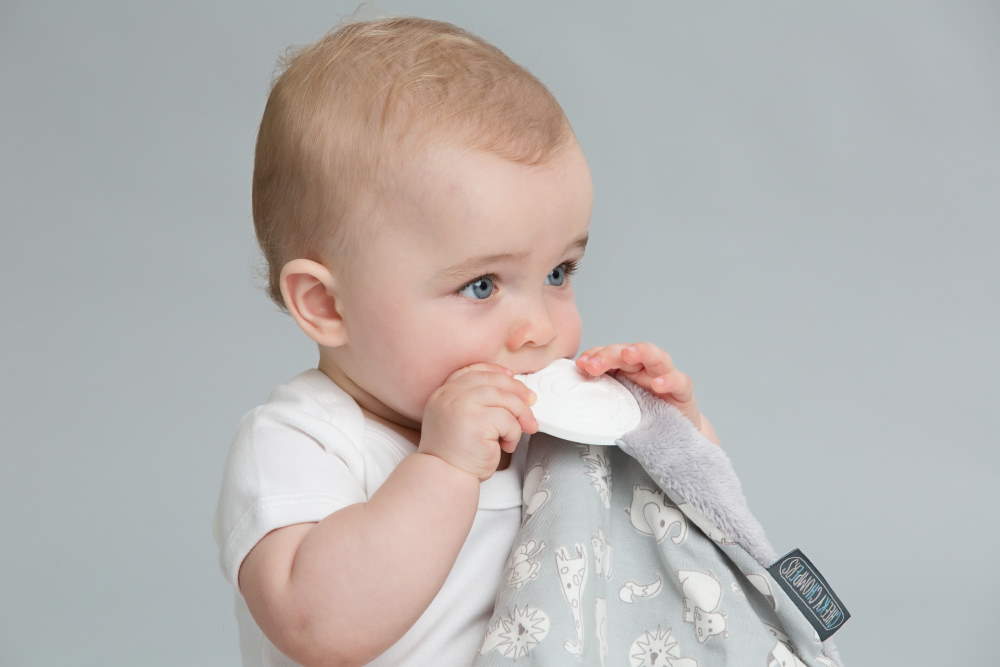As a parent, it’s always a joy to witness your baby’s milestones. One significant milestone that often comes with its fair share of challenges is the arrival of your little one’s first teeth. During this stage, commonly known as teething, babies experience discomfort and crankiness as they begin their chompers’ journey.
Understanding when teething begins and what to expect can help you navigate this period more smoothly. In this article, we delve into the world of teething troubles, bringing you valuable insights on this important stage of your baby’s development.
Starting with the basics, we explore when teething typically begins and the signs to look out for. We also share actionable tips on how to soothe your baby’s discomfort and manage the associated irritability. Plus, we’ll debunk common teething myths and provide reliable advice from pediatric experts.
Join us on this informative journey as we unravel the mysteries of teething and empower you to support your baby through this delightful yet challenging milestone.
Signs and symptoms of teething
Teething can be a stressful time for both babies and parents. It’s important to recognize the signs and symptoms of teething so you can provide the necessary support and comfort your baby needs.
1. Excessive drooling: One of the most common signs of teething is excessive drooling. You may notice your baby’s bib constantly soaked or their chin wet. This is because teething stimulates saliva production.
2. Irritability and fussiness: Teething can cause discomfort and pain, leading to irritability and fussiness. Your baby may be more difficult to soothe or seem more agitated than usual.
3. Gnawing and chewing: Babies naturally try to relieve teething pain by gnawing and chewing on objects. You may notice your little one biting down on their fingers, toys, or anything they can get their hands on.
4. Swollen gums: Teething can cause the gums to become swollen and tender. You may notice redness or a slight bulge in the area where the new tooth is about to erupt.
5. Changes in sleep patterns: Teething discomfort can disrupt your baby’s sleep patterns. They may wake up more frequently during the night or have difficulty falling asleep.
When do babies start teething?
Teething typically begins around the age of 6 months, although it can vary from baby to baby. Some may start teething as early as 3 months, while others may not experience this milestone until they are 12 months or older.
The order in which teeth erupt can also differ among babies. The first teeth to appear are usually the lower front teeth, followed by the upper front teeth. Gradually, the rest of the teeth will start to come in, and by the age of 3, most children have a full set of 20 primary teeth.
It’s important to remember that teething is a natural process and not a reflection of your baby’s overall development. Some babies may have a more challenging time with teething, while others may breeze through it with minimal discomfort.
The teething process
Teething is a gradual process that occurs over several months. It starts with the eruption of the first tooth and continues until the last tooth has come in. Understanding the stages of teething can help you anticipate what to expect during this time.
1. Stage 1: Pre-eruption: This stage begins a few months before the first tooth erupts. Your baby’s gums may become swollen and more sensitive. They may also display signs of teething, such as increased drooling and chewing.
2. Stage 2: Eruption: This is when the first tooth finally emerges from the gums. It can be an exciting milestone for both you and your baby. The tooth may appear as a small white bud, and you may notice some discomfort and irritability during this time.
3. Stage 3: Transition: After the first tooth erupts, there will be a period of rest before the next tooth starts to come in. Your baby may experience a break from teething symptoms during this time.
4. Stage 4: Repeat: The teething process continues with each new tooth erupting and going through the stages mentioned above. It’s important to be patient and provide comfort to your baby during this process.
Soothing teething pain
Seeing your baby in discomfort can be heartbreaking. Fortunately, there are several ways you can provide relief and soothe teething pain. Here are some effective strategies to try:
1. Cold compresses: Applying a cold washcloth or a chilled teething ring can help numb the gums and reduce swelling. Make sure to wrap the compress in a clean cloth to protect your baby’s delicate skin.
2. Gentle gum massage: Using a clean finger, gently massage your baby’s gums in the area where the tooth is erupting. The pressure can help alleviate discomfort and provide temporary relief.
3. Teething toys: Teething toys specifically designed for babies can be a great source of comfort. Look for toys made of safe, non-toxic materials that are easy for your baby to hold and chew on.
4. Teething gels: Teething gels containing a mild numbing agent can provide temporary relief. However, it’s important to use them sparingly and according to the instructions provided by your pediatrician.
5. Distraction: Sometimes, a little distraction is all your baby needs to forget about their teething discomfort. Engage in playful activities or offer them a favorite toy to redirect their attention.
Remember to consult with your pediatrician before using any teething remedies or products to ensure they are safe for your baby.
Teething myths and misconceptions
Teething has long been surrounded by myths and misconceptions. It’s important to separate fact from fiction to avoid unnecessary worry or ineffective remedies. Here are some common teething myths debunked:
Myth 1: Teething causes fever: Contrary to popular belief, teething does not cause a fever. If your baby has a fever, it’s likely due to an unrelated illness, and you should consult your pediatrician.
Myth 2: Teething causes diarrhea: Teething can sometimes coincide with changes in bowel movements, but it does not directly cause diarrhea. If your baby has persistent diarrhea, consult your pediatrician to rule out any underlying conditions.
Myth 3: Teething requires medication: While teething can be uncomfortable, it usually doesn’t require medication. Most teething symptoms can be managed with home remedies and non-medicated teething products.
Teething remedies to avoid
While there are many safe and effective ways to soothe teething pain, there are also some remedies that should be avoided. These include:
1. Teething necklaces: Teething necklaces that are worn by the baby can pose a choking hazard. It’s best to avoid using them to prevent any accidents.
2. Numbing gels containing benzocaine: Numbing gels containing benzocaine should be avoided in babies and young children. Benzocaine can cause a rare but serious condition called methemoglobinemia.
3. Homeopathic teething tablets: Homeopathic teething tablets have been associated with potential risks. It’s important to consult with your pediatrician before using any homeopathic remedies.
Teething toys and products
Teething toys and products can provide much-needed relief for your baby during teething. When choosing teething toys, keep the following in mind:
1. Safety: Ensure that the teething toy is made from safe, non-toxic materials. Look for products that meet safety standards and have been tested for harmful substances.
2. Size: The teething toy should be an appropriate size for your baby to hold and chew on safely. Avoid toys with small parts that could pose a choking hazard.
3. Cleaning: Opt for teething toys that are easy to clean and maintain. Look for products that can be washed with soap and water or sterilized to keep them hygienic.
4. Variety: Babies have different preferences when it comes to teething toys. Offer a variety of textures, shapes, and sizes to see what works best for your little one.
Dental care for babies during teething
Good oral hygiene is important, even before your baby’s first tooth appears. Here are some tips for dental care during the teething stage:
1. Clean gums: Before teeth erupt, gently wipe your baby’s gums with a clean, damp cloth or a soft infant toothbrush. This helps remove bacteria and keeps the mouth clean.
2. Brushing with toothpaste: Once the first tooth appears, you can start using a rice grain-sized amount of fluoride toothpaste to brush your baby’s teeth. Gradually increase the amount of toothpaste as your baby gets older.
3. Regular dental check-ups: Schedule regular dental check-ups for your baby, starting around their first birthday. This allows the dentist to monitor their oral health and provide guidance on proper dental care.
Conclusion
Teething is a natural and important milestone in your baby’s development. While it can be challenging at times, understanding the signs, symptoms, and stages of teething can help you provide the necessary support and comfort your baby needs. Remember to consult with your pediatrician for personalized advice and to ensure the safety of any teething remedies or products you use. By being proactive and patient, you can navigate the teething journey with confidence and ensure your little one’s chompers grow healthy and strong.



